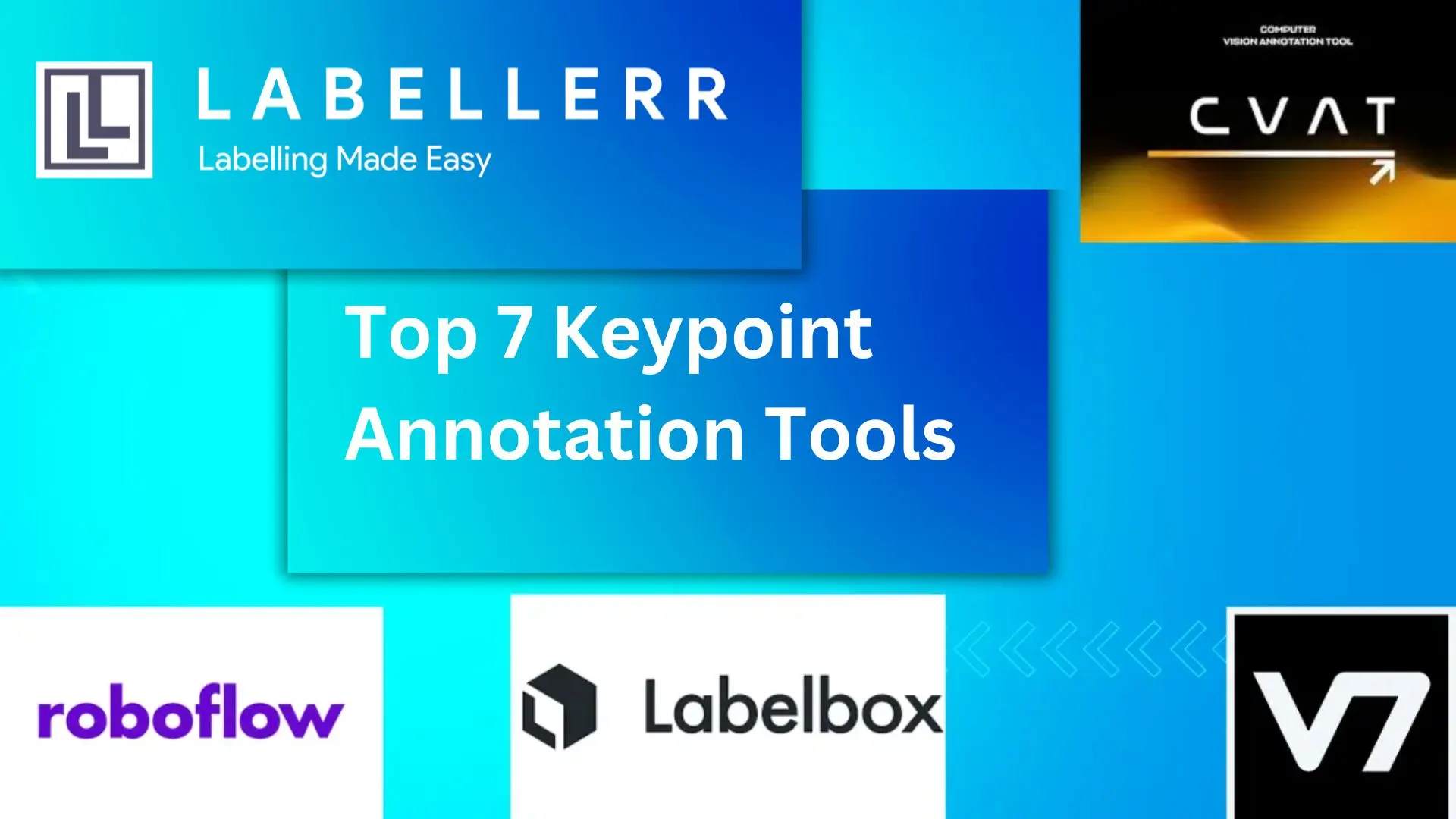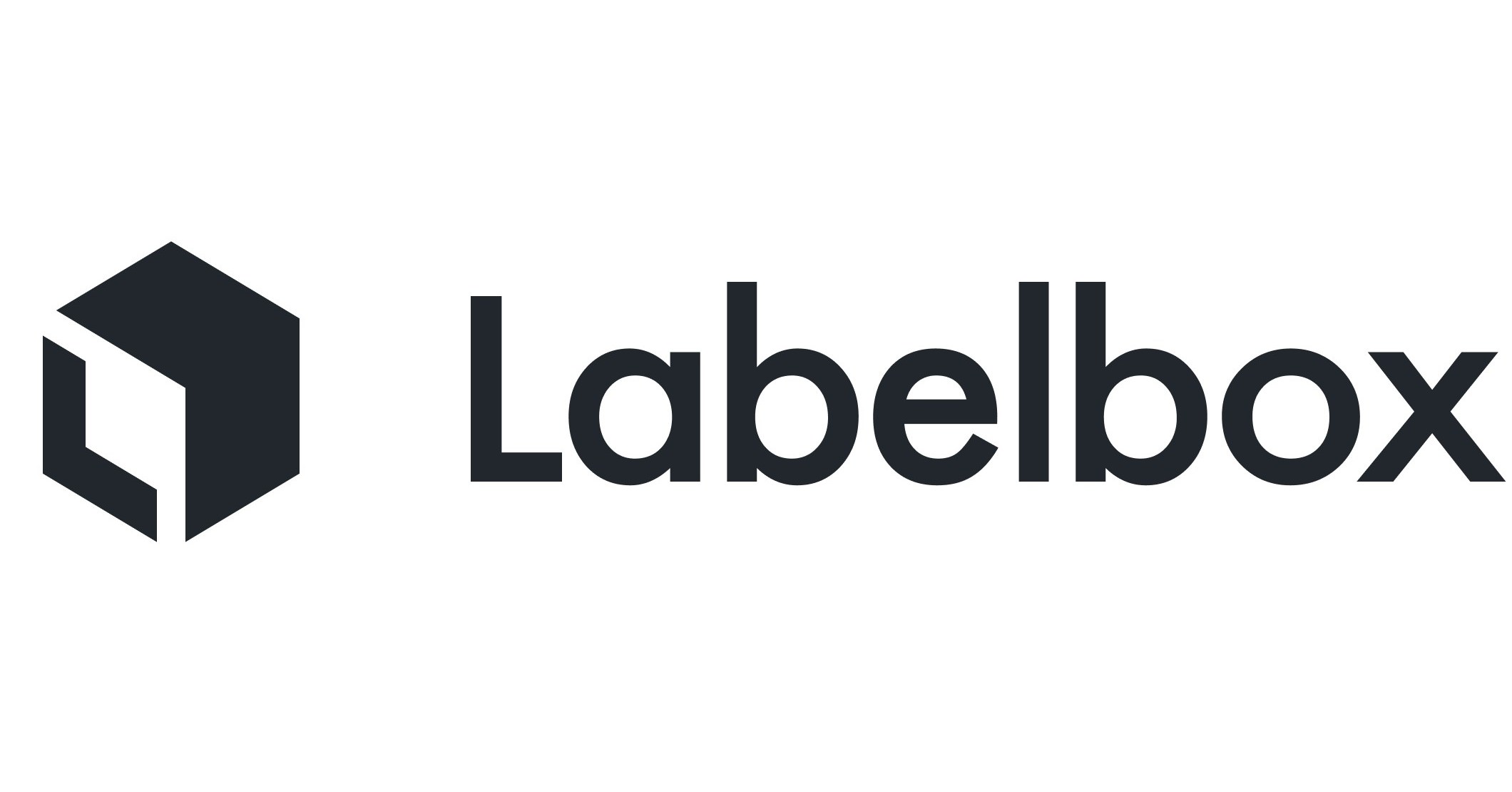7 Best Keypoint Annotation Tools in 2025
In 2025, top keypoint annotation tools include Labellerr, V7 Labs, Labelbox, Roboflow, Dataloop, and Encord. These platforms offer precision in marking keypoints for tasks like facial recognition and pose estimation.

Keypoint annotation tools play a crucial role in computer vision and machine learning applications, enabling precise labeling of important points within images or videos.
These tools are essential in various fields such as facial recognition, motion tracking, and object detection, providing the foundational data needed for training sophisticated AI models.
Keypoint annotation involves marking specific locations on objects or within images, like facial landmarks, joint locations in human pose estimation, or key points on vehicles for autonomous driving.
The accuracy and efficiency of these tools directly impact the quality of machine-learning models and their real-world applications.
In this blog, we'll explore some of the top keypoint annotation tools available today, each offering unique features to streamline the annotation process.
With the right tools, you can accelerate your workflow, improve accuracy, and ultimately create more reliable computer vision systems.
Table of Contents
- Features To Look In A Key Point Annotation Tools
- Labellerr
- V7 Labs
- Labelbox
- Roboflow
- Dataloop
- Encord
- CVAT
- Conclusion
- Frequently Asked Questions
Features To Look In A Key Point Annotation Tools
When selecting a key point annotation tool, several critical features determine its effectiveness and suitability for your project.
Here are some key points to consider:
Accuracy and Quality
The tool should enable high-precision keypoint placement to ensure accurate data labeling. Look for features like snap-to-grid, magnification, and automated quality checks to enhance accuracy.
Annotation consistency is crucial, especially when multiple annotators are involved. Tools that offer predefined templates or guidelines can help maintain uniformity.
Scalability
As projects grow, so do the demands on annotation tools. The tool should handle large datasets without compromising performance.
Consider tools that offer cloud-based solutions, enabling distributed annotation and easy scaling as your team or data volume increases.
Collaboration and Team Management
A good annotation tool should support team collaboration, allowing multiple annotators to work simultaneously. Features like role-based access control, task assignment, and real-time updates are beneficial.
Integration with project management systems or team communication platforms can streamline the workflow.
Automation and AI Assistance
Automation features like pre-annotation using AI models can significantly speed up the annotation process. Look for tools that offer these capabilities without compromising accuracy.
Tools with machine learning capabilities that improve over time based on feedback can further enhance efficiency.
Customizability and Flexibility
The tool should allow for customization to suit your specific use cases. This could include the ability to define custom keypoint structures, annotation types, or metadata.
Flexibility to work with various file formats and compatibility with common machine learning frameworks are also important.
User-Friendly Interface
A well-designed user interface can reduce training time and increase productivity. Intuitive controls, clear visual cues, and comprehensive documentation contribute to a smoother experience.
Data Security and Privacy
Given the sensitivity of some data, the tool should offer robust security features, including encryption, secure access controls, and compliance with data protection regulations.
Tools with audit trails and logging features can help maintain transparency and accountability in the annotation process.
These features can guide you in choosing a key point annotation tool that meets your project's demands while providing a smooth and efficient workflow for your team.
Here is the List:
1) Labellerr

Labellerr is an innovative keypoint annotation platform designed to streamline the process of creating high-quality labeled datasets for computer vision projects.
With a focus on accuracy and efficiency, Labellerr provides tools for annotating key points on a wide range of objects, from human body parts to facial landmarks and more.
The platform supports both manual annotation and AI-assisted pre-annotation, allowing users to quickly generate labeled data with a high degree of precision. This blend of manual and automated features makes Labellerr a versatile solution suitable for research, industrial, and commercial applications.
In addition to its annotation capabilities, Labellerr emphasizes collaboration and scalability, providing an environment where teams can work together in real-time.
2. V7 Labs

V7 Labs is a leading keypoint annotation platform known for its advanced AI-assisted annotation capabilities and user-friendly interface.
The platform offers a comprehensive set of tools for keypoint annotation, enabling users to label specific points within images or videos with high precision.
One of the standout features of V7 Labs is its automation capabilities, where AI models can pre-annotate key points, significantly reducing manual effort and speeding up the annotation process.
This automation, combined with intuitive controls, allows annotators to create accurately labeled datasets for a variety of computer vision applications, from facial recognition to pose estimation.
3. Labelbox

Labelbox stands out as a strong contender in the keypoint annotation arena. It offers a comprehensive suite of features designed to ensure both data accuracy and project scalability.
Labelbox supports various annotation types, including 2D key points, which is crucial for tasks like pose estimation.
Additionally, collaboration features like shared libraries and multi-annotator workflows with conflict resolution promote consistency within your team's annotations.
On the scalability front, Labelbox boasts support for diverse data formats, including images and videos, which can be crucial for real-world applications. Batch processing capabilities and hotkey customization streamline the annotation.
4. Roboflow

Roboflow offers a user-friendly platform specifically geared towards computer vision tasks, making it a strong choice for key point annotation.
Its intuitive interface streamlines the process of placing key points on your images. Roboflow supports labeling both regular and occluded key points, allowing for detailed annotations in scenarios where certain points might be partially hidden.
This is particularly valuable for tasks like pose estimation in dynamic environments. It allows for batch annotation, enabling you to efficiently label large datasets.
Furthermore, Roboflow integrates seamlessly with its own suite of computer vision tools, allowing for a smooth transition from annotation to model training and deployment. This streamlined workflow can be particularly attractive for those seeking an all-in-one solution for their computer vision projects.
5. Dataloop

Dataloop positions itself as a comprehensive DataOps platform, encompassing keypoint annotation as part of its broader data management functionalities.
While not solely focused on annotation, Dataloop offers a robust set of key point annotation tools.
These include support for various key point types, including 2D and potentially 3D depending on your specific needs.
Dataloop also boasts features to enhance annotation accuracy, such as the ability to mark occluded body parts, which is crucial for tasks like pose estimation in situations where limbs might be hidden behind one another.
Dataloop excels in managing and scaling your key point annotation projects. Its data management capabilities allow for seamless organization and collaboration on large datasets.
6. Encord

Encord carves a niche as a platform specifically designed for high-performance computer vision and multimodal AI tasks.
This focus translates into robust keypoint annotation capabilities. Encord supports a variety of annotation types, including the crucial 2D key points essential for tasks like pose estimation.
Beyond basic annotation, Encord offers features to enhance accuracy, such as AI-assisted labeling that leverages pre-trained models to automate parts of the process and reduce manual workload.
Encord caters well to project scalability. The platform allows for batch annotation to efficiently handle large datasets.
7. CVAT

CVAT (Computer Vision Annotation Tool) stands out as a popular open-source option for keypoint annotation.
While lacking some of the bells and whistles of commercial platforms, CVAT offers a powerful and versatile feature set.
Crucially, it supports 2D keypoint annotation, making it suitable for tasks like pose estimation. CVAT allows for detailed labeling by enabling the creation of "skeletons" that connect key points, providing a more comprehensive picture of object structure.
Additionally, CVAT boasts functionalities to streamline the annotation process, such as interpolation for generating keypoints in between frames of a video sequence.
Read our other listicles:
Conclusion
In conclusion, key point annotation tools are critical components in the development of robust computer vision and machine learning systems.
These tools provide the foundational data needed to train models for applications such as facial recognition, motion tracking, human pose estimation, and object detection.
As discussed, platforms like Labellerr and V7 Labs offer advanced features to ensure accuracy, scalability, and collaboration, addressing the diverse needs of developers, researchers, and enterprises.
When selecting a key point annotation tool, it's essential to consider factors such as accuracy, scalability, automation capabilities, and user interface.
The right tool can significantly streamline your workflow, reduce annotation time, and improve the quality of your datasets. Additionally, features that support teamwork, data security, and integration with other platforms are crucial for ensuring a seamless experience.
Frequently Asked Questions
Q1) What is a keypoint annotation tool?
A key point annotation tool is a software application used to mark specific points within images or videos. These points are often used to train machine learning models in computer vision tasks like facial recognition, human pose estimation, and object detection.
Q2) Why is keypoint annotation important in computer vision?
Keypoint annotation provides labeled data that machine learning algorithms use to learn patterns, relationships, and structures within images or videos. Accurate key point annotations lead to more reliable models, which is crucial in applications like autonomous driving, medical imaging, and augmented reality.
Q3) What features should I look for in a keypoint annotation tool?
When choosing a key point annotation tool, consider factors such as accuracy, scalability, user-friendly interface, collaboration features, automation capabilities, and data security. Tools that offer cloud-based solutions, role-based access controls, and AI-assisted pre-annotation can be particularly useful.

Simplify Your Data Annotation Workflow With Proven Strategies
.png)


